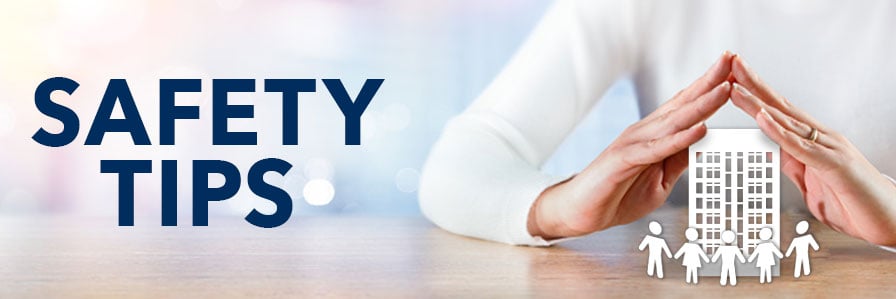Employees wrongfully accuse employer of child abuse: The owner of a childcare center was accused of physically abusing children by her employees. It was revealed at trial, however, the accusers fabricated their entire story in an effort to get rid of the owner in order to take over her business. The charges were eventually dropped, but the woman’s reputation was severely damaged. She was ultimately forced to move to a new community to escape the false allegations.
False allegations of abuse can have devastating life-long consequences. Even if an individual is acquitted, it can cost thousands of dollars to defend against the allegations and the damage to an organization or individual’s reputation cannot be undone. Anyone working with children should take steps to minimize this risk.
Reasons People Make Wrongful Accusations of Abuse
 False allegations of abuse can come from anyone for almost any reason.
False allegations of abuse can come from anyone for almost any reason.
- Children may make wrongful accusations because they’re being abused elsewhere, because they’re confused, or because they simply misunderstand the situation.
- Parents may wrongly accuse someone if they’re angry at an organization or individual, if they’re protecting an abuser in their own family, or if they’re trying to hide some of their own transgressions.
- Employees, like those referenced in the introductory story, may make false accusations as a form of retaliation against their employer.
Even someone with good intentions could misinterpret an interaction and decide it looked like abuse. These accusations are often the result of people having different opinions about what is or is not appropriate contact.
Appropriate Contact
People who are passionate about working with children don’t typically think about what other people may or may not consider appropriate contact with a child. The best teachers, childcare providers, camp counselors, and sports coaches develop close relationships with the children they work with and don’t think twice about comforting a sad child, handling a temper tantrum, or teaching a child a new skill.
This level of caring and dedication can, however, lead to problems. A teacher may feel that they are simply leading a child by the hand, but a concerned parent could see the child being dragged abusively.
It goes without saying that physical contact with a child should only occur when that child welcomes the interaction. But it’s equally important that even consensual interactions stand up to even the most unwarranted scrutiny. If the goal is to prevent all false accusations, then no one, not even someone going out of his or her way to spot abuse where it isn’t happening, should have any reason to question a person’s interactions with a child.
Try to think of how any contact would look to an outsider who has no idea what the child and adult’s relationship is like.
Protecting Yourself from False Allegations of Abuse
Avoid all One-On-One Situations with Children
The easiest way to avoid false abuse allegations is to follow a policy where no adult is left alone with a child. This ensures someone else who witnessed the interaction can testify to its innocence. Many organizations follow the “rule of three,” meaning groups of at least two adults and one child, or two children and one adult are maintained at all times.
Situations Where One-On-One Interactions Are Unavoidable
While a strict policy preventing one-on-one contact is the best way to protect against false claims, it’s not always feasible. People working with children may need to be left in a one-on-one situation for a variety of reasons. For example, childcare providers may be left alone if only one teacher is required by licensing due to low numbers. Or a childcare provider may be alone with a group of very young children that can’t verify a person’s actions. Sports coaches may give private lessons to a child. A day camp counselor may have to wait for the last child’s parents to arrive to pick them up. The possibilities are endless.
Whenever possible, these situations should be avoided. When they can’t, however, it may be necessary to take additional steps.
Install Audio and Video Recording
While extreme, one way of proving someone’s innocence is installing a video monitoring system throughout the facility. A video system can act as an impartial witness to all interactions. Video evidence can be extremely helpful in disproving abuse claims.
A video monitoring system, however, may not be practical for some facilities and won’t be helpful in areas where cameras aren’t allowed, such as bathrooms. For young children who still need help, doors need to be kept open. Older children can go to the bathroom in groups, so they are never alone with an adult.
Make it Easy for Others to Check In
Classroom doors should be equipped with windows or left open if at all possible. This way, interactions between children and adults can be observed from the outside. If a coach is giving a private lesson, the gym doors should be open. Supervisors should also make a habit of randomly dropping in throughout the day. They can provide another adult witness to all interactions.
It’s important to encourage staff members to look out for each other as well. If employees notice situations or behaviors in their fellow staff members that are potentially leaving them vulnerable to false abuse allegations, they should step in or ask a supervisor to help. Over time it’s easy to get complacent about these procedures.
Steps to Take if a False Allegation is Made
False abuse allegations can still occur even when extreme care is taken. If this happens, do not panic. Notify the proper authorities and cooperate with the investigation. Contact your business insurance carrier if applicable and a lawyer for legal counsel as soon as possible. Even if you know you or your employee is innocent, an experienced attorney will be able to help prove this and mitigate some of the damage.




